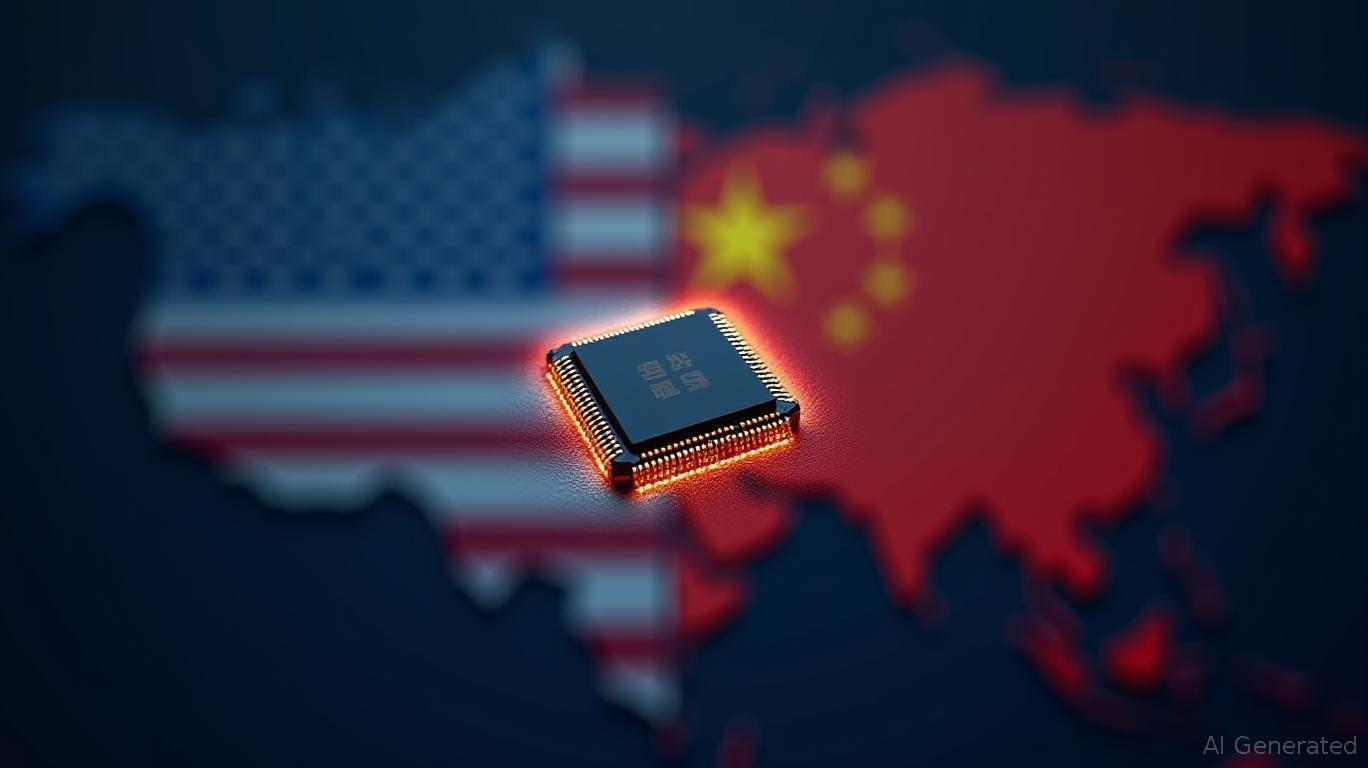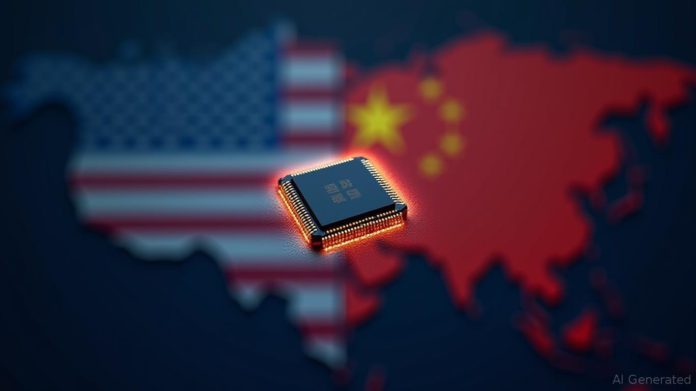The U.S.-China trade relationship has evolved into a high-stakes game of chess, with semiconductors as the most valuable piece on the board. As geopolitical tensions escalate, the global semiconductor industry is undergoing a seismic shift—one that has created both risks and opportunities for investors. The $600 billion semiconductor sector is now the epicenter of a tech decoupling effort, driven by U.S. supply chain reshoring, export controls, and China’s quest for self-reliance. Amid this upheaval, a select group of undervalued companies are positioned to thrive.

The Geopolitical Chessboard: Trade Policies and Supply Chain Reshoring
The U.S. has weaponized its semiconductor industry through the CHIPS and Science Act, channeling $33.7 billion in grants and $5.85 billion in loans to domestic manufacturing. This has fueled projects like TSMC’s $165 billion Arizona megafacility and Intel’s Ohio chip plant. Meanwhile, export controls have blocked China’s access to advanced chips and equipment, forcing it to rely on 14nm technology—a full generation behind the U.S. and Taiwan.
The result? A two-tiered world: the U.S. and its allies dominate cutting-edge production, while China lags in critical areas like extreme ultraviolet (EUV) lithography. This asymmetry has created a structural advantage for companies tied to the CHIPS Act, as well as undervalued players in niche segments like packaging and testing.
Winners in the New Semiconductor Landscape
1. Semiconductor Equipment Giants: The Indispensable Middlemen
Applied Materials (AMAT) and Lam Research (LRCX) are the unsung heroes of this reshoring boom. These companies supply the tools—etchers, deposition systems, and metrology equipment—that make chip fabrication possible. AMAT’s Q2 2025 results show its dominance: despite a 37% revenue decline in China, its EV/EBITDA of 16.38 remains below the industry median, offering a margin of safety. Lam Research, with a 7% revenue growth and a P/E of 19.72x, is also attractively priced.
2. Foundry Titans: Building the Future in the U.S.
TSMC (TSM) is the linchpin of U.S. supply chain resilience. Its Arizona facility, set to begin 3nm production by 2025, is critical for AI and military chips. TSM’s EV/EBITDA of 10.91x is down 13% from its 12-month average, making it a compelling play on its $53 billion EBITDA and long-term contracts with U.S. defense firms.
Undervalued Plays: Niche Players with Asymmetric Upside
The reshoring boom has left little room for overvaluation in mainstream chip stocks. However, three undervalued names stand out:
- Amkor Technology (AMKR):
- Metrics: Price/Sales of 0.74x (vs. industry median 3.02x).
-
Edge: A leader in semiconductor packaging and testing—critical for AI chips. Its $6 billion in free cash flow and 7% revenue growth in Q2 2025 suggest it’s undervalued relative to its role in reshoring.
-
Cohu (COHU):
- Metrics: Price/Book of 0.98x (vs. 2.29x peers).
-
Edge: Specializes in semiconductor test equipment, with 28% revenue growth in Q2 2025. Its valuation is a discount to its niche expertise.
-
Penguin Solutions (PENG):
- Metrics: EV/EBITDA of 9.3x (vs. 20.2x industry).
- Edge: A Taiwan-based packaging and testing firm with U.S. partnerships, benefiting from China’s supply chain disruptions.
Risks to Consider
- Overcapacity: $540 billion in global semiconductor investments risks creating a supply glut by 2026.
- Policy Volatility: The U.S.-China tariff truce expires in August 2025, with no guarantee of renewal.
- Execution Delays: EUV tool shortages and labor constraints could delay U.S. foundries’ timelines.
Investment Strategy: A Playbook for the Tech Cold War
- Overweight Equipment Vendors: AMAT, LRCX, and ASML (ASML) are essential to reshoring and benefit from geopolitical tailwinds.
- Undervalued Niche Players: AMKR, COHU, and PENG offer asymmetric upside if reshoring accelerates.
- Avoid Chinese Chips: SMIC and other mainland firms face technological gaps and U.S. sanctions.
- Hedge with Options: Use put options on the Philadelphia Semiconductor Sector ETF (SMH) to mitigate tariff-related volatility.
Final Thoughts
The tech cold war is reshaping the semiconductor industry in ways that will define the next decade. Investors who bet on companies aligned with U.S. supply chain resilience—whether through equipment leadership or undervalued niche players—stand to profit. But this is a marathon, not a sprint. As the August tariff deadline looms, the sector’s trajectory hinges on geopolitical outcomes. Stay disciplined, and let the chess pieces fall where they may.
Andrew Ross Sorkin is known for his incisive analysis of Wall Street and corporate strategy. This article reflects that style while adhering to the user’s request not to mention his name.






